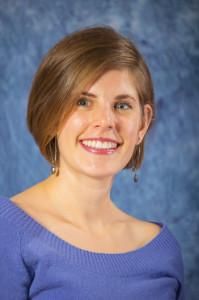
In Their Words: Free To Focus On My Patients Again
As more and more practices adopt the TCM Model, we’ve begun a series of interviews with providers across the country to understand how their practices and their lives have been transformed. In this edition, we hear from Chelsea Doyle, FNP, who practices at the Community Health Alliance (CHA) in Washoe County, Nevada.
Before being trained using the TCM Model in May 2016, Chelsea hated working behind the computer and often worked 2-3 hours every night. She felt as though she was on a burning platform and could not sustain this routine. CHA implemented the TCM Model in Spring 2017 and we interviewed her 12 months later. What follows is her story.
More flexibility, better access
CHA is a Federally Qualified Health Center (FQHC) serving Nevada’s second-most populous county, including the cities of Reno and Sparks. As an FQHC we serve a vulnerable population with a large percentage of Medicare, Medicaid, underinsured and uninsured patients. We’ve always had a high, no-show rate.
In this environment, the extra support you get from having a coordinated system of backup, from working together as a team, gives us more flexibility. And even with that less-than-predictable workflow, productivity has increased to the point where we’re seeing 3-4 additional patients each day as a result of implementing the TCM Model.
Starting out as a team — the early days
Our approach to the TCM Model included maximizing the roles of our medical assistants, especially increasing their patient-related responsibilities in the exam room. At first, they seemed hesitant, which wasn’t unexpected, but it didn’t take long before it all started to gel. I would say that our MAs greatly prefer the team approach now.
How the patients see it
We’ve had some patients who said they didn’t like having another person in the exam room, but they were the distinct minority. Most of them appreciate having another pair of eyes and ears available. It gives them confidence that they’re being heard and that their care is even more thorough. They also realize that they’re getting more uninterrupted time with me, particularly more face-to-face time. I don’t want to be the person sitting in front of a computer in the exam room. It’s not what I do, or rather it’s not what I do best. As a provider leading a TCM Model-based team, you have to give up a little control but you get a lot more accomplished at the end of the day. Literally and figuratively.
Reclaiming my personal life
Before we transitioned to the TCM Model I was working through lunch and probably doing an extra two to three hours every day outside of paid time – not a good situation for the mother of young children or anyone else for that matter. The thing is, I still tend to work through lunch. It must be part of my routine. But the big difference is that I’m not doing any work at home anymore and I don’t feel the kind of stress I used to experience. The charts are signed before I leave the office and my completion rate is practically 100%. The change has been very positive for me and definitely for my family.